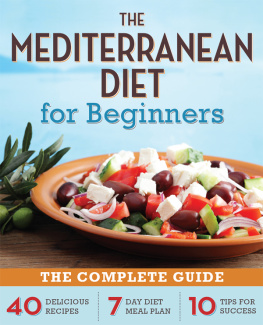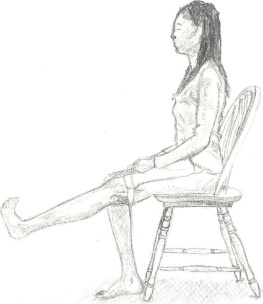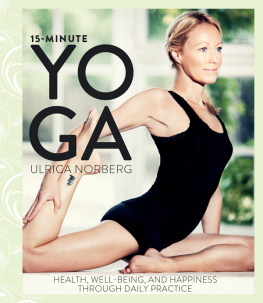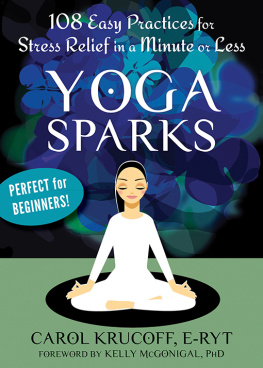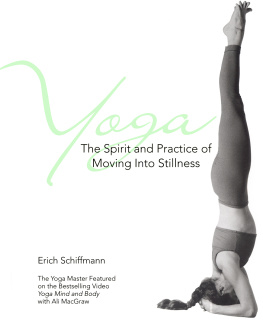All rights reserved.
This book, or parts thereof, may not be reproduced in any form without permission from the publisher; exceptions are made for brief excerpts used in published reviews.
Adams Media, an imprint of Simon & Schuster, Inc.
57 Littlefield Street, Avon, MA 02322. U.S.A.
The information in this book should not be used for diagnosing or treating any health problem. Not all diet and exercise plans suit everyone. You should always consult a trained medical professional before starting a diet, taking any form of medication, or embarking on any fitness or weight-training program. The author and publisher disclaim any liability arising directly or indirectly from the use of this book.
Cover design by Heather McKiel.
Cover images iStockphoto.com/hpkalyani.
Interior illustrations by Eric Andrews.
Introduction
Looking for an easy, portable collection of your favorite yoga poses? Look no further. Whether youre new to the study of yoga or have been practicing for years, My Pocket Yoga will help you enjoy the mindfulness and stress-relief of yoga throughout the day. The poses, mantra, breathing techniques, and sequences youll find in this guide will help you feel more balanced, centered, and refreshed in minutes.
Youve no doubt heard about friends, colleagues, and celebrities who swear by yoga. What is all the fuss about? Yoga can help you look and feel great, open and strengthen your body, quiet and focus your mind, relieve tension, increase your self-knowledge and awareness, improve your quality of life, and change how you see the world. It has a profound and lasting effect on how you treat yourself and others. Time spent doing yoga is an opportunity to reconnect intimately with yourself on many levels and to give yourself your complete attention. When was the last time you did that?
By practicing yoga you can rejuvenate, care for, and nurture yourself at the deepest levels, resulting in greater reservoirs of compassion and tolerance for other people and a positive impact on your relationships. Most importantly, you will develop a better relationship with yourself. You will experience longer periods of calm and clarity. All those minor daily annoyances, emotional ups and downs, and responsibilities will be brought into a broader perspective, which allows them to come and go without becoming overly attached to you. You will begin to understand what is most life-affirming, beneficial, lasting, and important to you.
This book will help you become centered, calm, rejuvenated, and better able to face lifes challenges, big and small. Lets get started.
Part 1
Breathing and Visualization
Before you attempt poses, its important to have a full understanding of your breathing patterns because yoga links the breath to the body. The breath is the bridge between mind and matter, between body and spirit. During inhalation, you are receiving life. Upon exhaling, you return what you dont need and rid the body-mind of impurities.
Yogic Breathing
When you begin practicing yoga, your respiration may be shallow, with small, fairly rapid breaths. The average person breathes sixteen to eighteen breaths per minute. As you continue your yoga practice, your rate of breath will become slower, and each inhalation and exhalation will become longer and fuller. Deeper breaths allow the energy to reach every cell.
The yoga postures open the body to receive the breath, resulting in increased elasticity of the lungs and intercostal muscles (located between the ribs). Forward bends stretch the back of the body and fill the back of the lungs; backbends open the front of the body and the front of the lungs; and lateral bends lengthen the sides of the body and the space between the lungs (the intercostal muscles). Inversions bring greater oxygen and blood flow to the brain.
In yoga, the body is considered to be a container for the life force. The nervous system is the electrical circuitry, which conducts the energy of the body. The spinal column, called sushumna, is the central pathway. Two other main pathways are the pingala, to the right of the sushumna, and the ida, on the left side. Balance between the ida and pingala increases the energy flow to the sushumna. The ida channel cools the body and corresponds to the parasympathetic nervous system, while the pingala heats up the body and is the sympathetic nervous system. These main channels correspond to the central nervous system and are called nadis. There are thousands of smaller nadis comprising the peripheral nervous system. When the energy in the body increases significantly, it is said that the kundalini (serpent power) energy rises up the spine (the sushumna), opening the various energy centers in the body and causing spiritual evolution within the individual.
Yogic breathing is almost always done through the nostrils. The nose is a complex and extremely efficient filtering system of foreign particles. As the breath enters the nostrils, it is moistened and warmed to body temperature. Breathing through the nose allows for deeper, fuller, and more controllable breathing.
Mouth breathing is for those times of athletic competition, such as sprint running, when the body is in oxygen deprivation because of the excessive demands being placed upon it. Then mouth breathing becomes the last resort. For these reasons, it is considered a waste of energy to breathe through the mouth.
Breathing Exercises
Breathing is an important part of yoga. Observe your breath during the day. Check in with your breath every hour at a specified time. Slow down and tune into the quality and length of the inhalation, the exhalation, and the pauses in between. Notice if the breath is smooth or ragged, shallow or deep. Take several breaths through your nostrils and then through your mouth, observing the differences. Was the length of the inhalation and exhalation the same? Does your mouth feel dry as a result of breathing through the mouth? Which style feels more comfortable? Try the following breathing exercises as a part of your yoga practice.
Complete Breath
Lie down with bent knees, and begin breathing through your nostrils and observing your breath. Become aware of the natural length of your inhalation and exhalation, and the pauses in between. Remain relaxed without changing or forcing the breath. Let the breath flow smoothly and evenly. Relax your facial muscles and jaw.
Now place your hands on your lower abdomen, allowing them to rest there lightly. As you breathe in, feel your hands fill with your breath as your belly gently expands. On exhalation, notice how your belly contracts, moving away from your hands and receding into your body. Spend ten to twelve breaths observing the movement of the breath in your belly.





